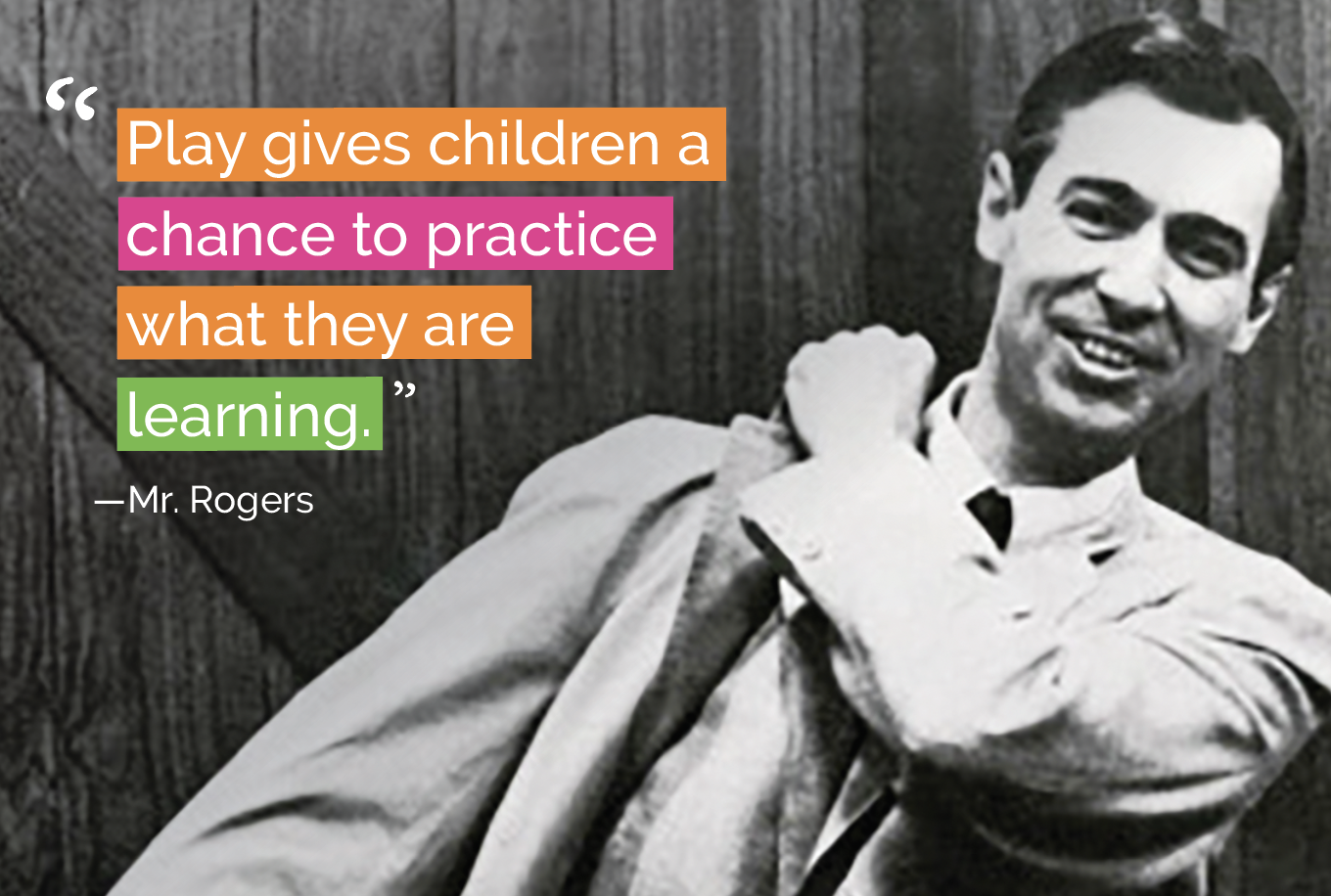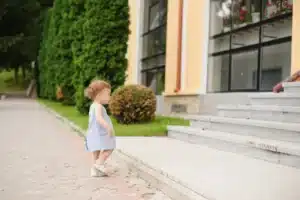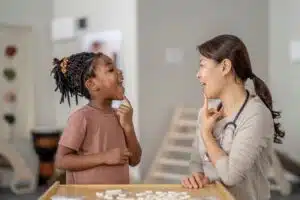By Madison Gwizdalski MS-CCC, SLP
“Play gives children a chance to practice what they are learning.” ~ Mr. Rogers
Flashcards, quizzing, educational television shows… it might seem like this would be the best way to teach our children new language concepts. But what if I told you that the best way to connect with your child is to become a child again?
What does that mean?!
It means get down on the floor and PLAY! Play is the most important way that children learn about their world, and it is our job as adults and caregivers to facilitate that learning. Play teaches children new skills… and one of the most important skills for them to learn is language.
In fact, research has shown us that play develops hand in hand with language. The development of play and language typically mirror each other – as a child meets their developmental play milestones, they meet certain language milestones. Dr. Carol Westby has even developed a play scale that describes stages of play from 9 months to 5 years of age, that allows you to track and predict what language and play skills will emerge next. So, when a child’s play skills are impaired…. Typically that also means an impairment with language skills.
To get a better understanding of how play and language develop together, let’s take a look at 4 stages of early play.
| Age Range | What Play Looks Like | Communication Skills |
| Exploratory play 0-8 months |
|
|
| Nonfunctional Play Starts around 8-12 months |
|
|
| Beginning Functional Play Begins at 12-15 months |
|
|
| Early Symbolic Play Begins around 17-18 months |
|
|
Why do we see that toddlers usually develop increased words as early symbolic play emerges? Because language is symbolic. In symbolic play, we are using objects to represent things or situations that are not currently happening, but that are linked to our reality. With language, we are using words (another symbol!) to represent and express things related to events in the word that we are experiencing or have experienced. As our capacity for symbolic thinking develops, so do the ways in which we can use language to express ourselves.
How can we foster play development in our littles? Here a just a few tips on how you can support play development (and therefore language development!):
- Start at the appropriate level: play develops in a sequential manner. Your child needs to go through the earlier stages of play before they begin to use early symbolic play.
- Choose toys and objects that support your child’s stage of play. See here for a list of toys for each stage.
- Stay and play with your child! Sit face to face on the floor, model how to use the toy, and provide opportunities for practice.
- When you purchase toys, make sure they practice a variety of skills. For example, you want some toys that practice turning, switching, dropping in, stacking, putting together, etc.
- Be fun! Play should be light-hearted, fun, and cheerful! Reduce “nos” and increase “yays!”




